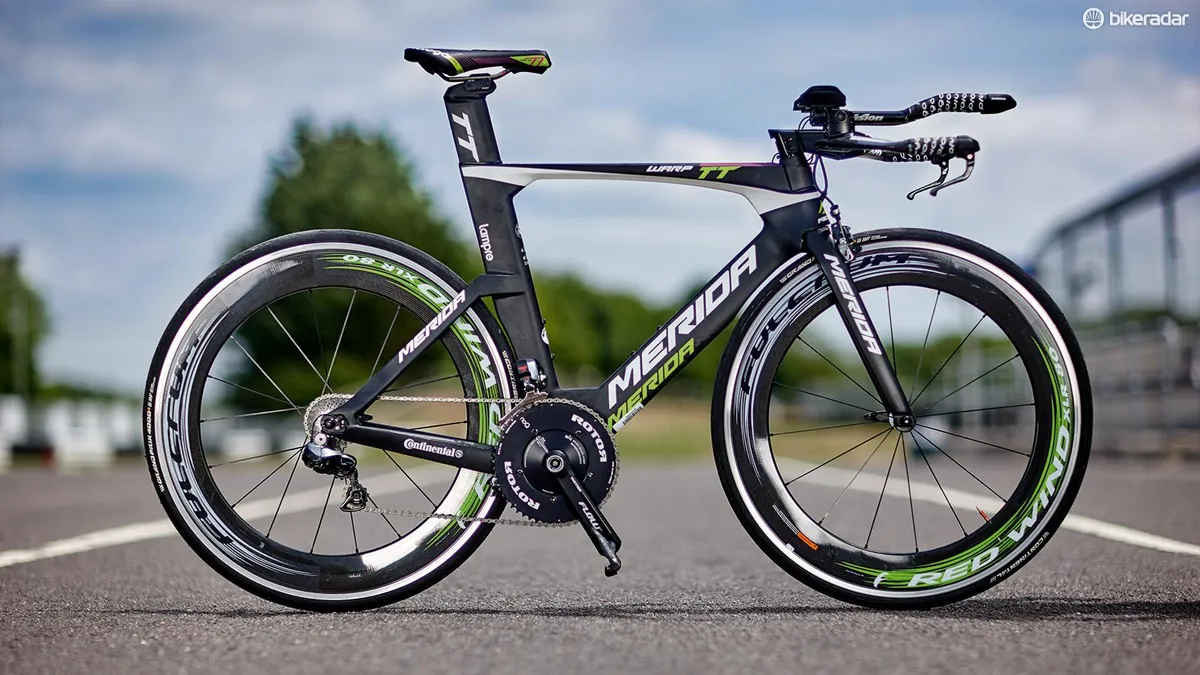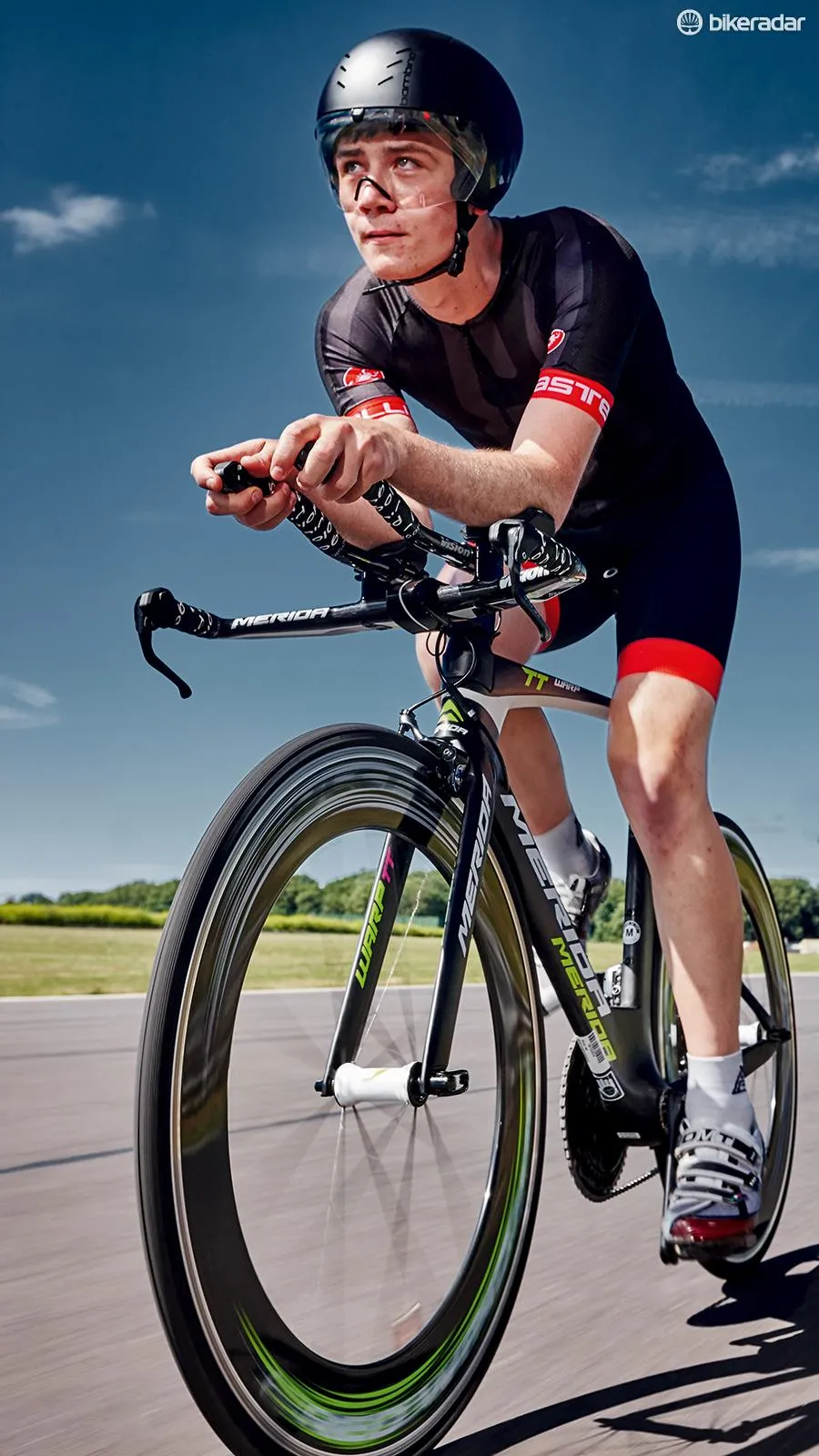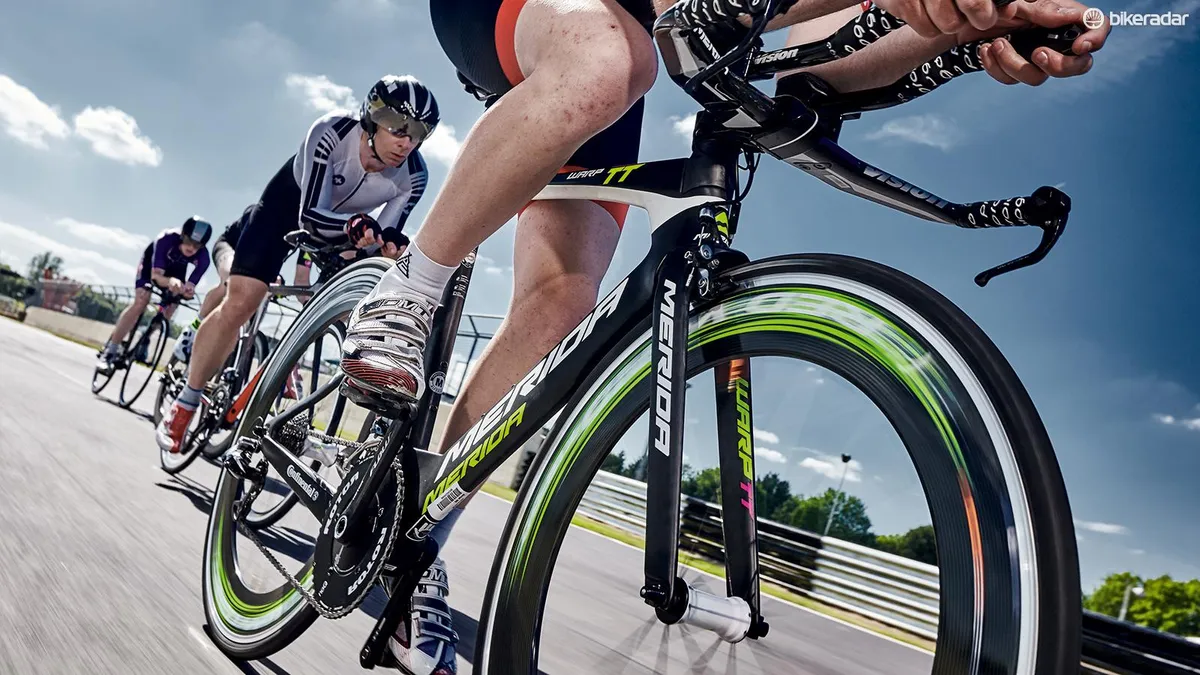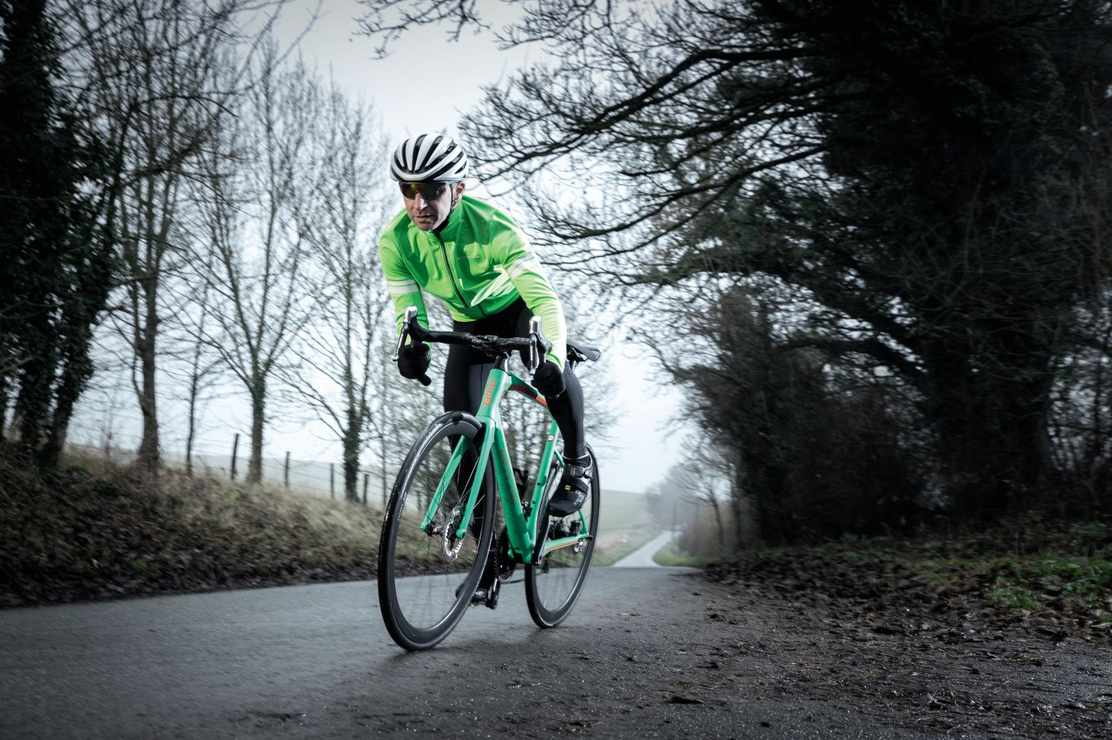Warp TT. Time warp, see what they did there? The main frames of Merida’s Warp and BMC’s TM01 share major similarities, at least in profile, but with the UCI’s 3:1 ratio rules and the universal use of CFD and wind tunnel testing, it’s hardly a surprise.
- Highs: Aggressive looks, fast ride, cockpit integration
- Lows: Hybrid wheels suffer in crosswinds and on hills
- Buy if: You’re a fan of ruthlessly efficient German engineering and colourful Italian style
If that design is the fastest, there’s little room for embellishing without compromising speed.
The front ends do differ markedly though, with Merida’s German designers opting for a conventional fork steerer and headset arrangement, and Shimano direct mount caliper bolted on the front of the wide stance fork crown. There’s no intricate internal cabling up front, with the rear brake entering the side of the down tube, and only the Di2 wire running from the control box’s position inside the hollow stem to a top tube port behind it.
Related: The best 2016 TT and triathlon bikes at Eurobike
It is possible to run the stem so it is flush with the top tube, in which case the Di2 wires will be completely internal, but our test machine had an optional 60mm structural spacer installed to raise the bar assembly while maintaining great rigidity. The modular stem is adjustable for length by adding or removing sections, and totally specific to the heavily swept forward Vision bar, which gives good reach when out of the saddle. Alloy S-bend extensions are comfy on the wrists, and there’s lots of adjustment built in.
Prologo’s Zero TT saddle has a wide, well-padded nose, and bands of grippy CPC silicone material to keep you on the rivet. The carbon aero seatpost has a sliding clamp for heaps of effective angle adjustment too.
From a standing start, the Warp is completely rigid and powers off the line like the first athlete in an Olympic sprint. The slim down tube flares in to a massive bottom bracket shell, and on in to enormous asymmetric chainstays, ensuring great power delivery, and the giant head tube area and solid bar gives more confidence to heave harder.
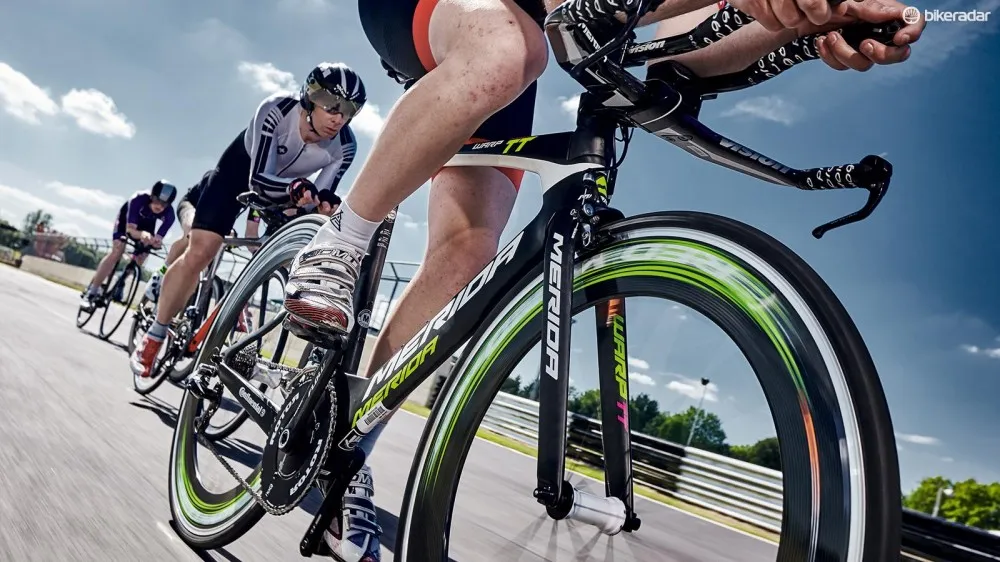
Fulcrum’s Red Wind XLR80 wheels are very rigid laterally, and cleave the air impressively on flattish straight sections, but being hybrid, with alloy braking tracks, they suffer more on the rises, and their narrow pointy profile requires a very definite commitment to turn across the wind into a corner, especially at speed when on the extensions. There will be days when an 80mm front wheel is more folly than fast, although more modern shapes partly circumvent this issue.
Nevertheless, the Warp will gain speed fast, and doesn’t like shedding it. With ample scope for getting yoga-low, and a dinner plate of a 54 ring, flat roads are dispatched in a hurry. It’s no slouch in the twisty bits either – the front end is very positive feeling, and always feels well connected to the tarmac.
There are turn stops to prevent damage to the recessed fork crown or down tube from the fork flopping around, but unless you’re trying to dead turn in six feet, you’ll be okay.
On the limit the Warp is perfectly controllable, both saddle and bars keeping you at one with the bike. Shimano’s Dura-Ace Di2 is in its element on a TT bike, and this setup mirrors the two-way controls of the brake levers on the extensions too, which you’ll either love or hate.
We liked it, although when you’re seeing stars, that tiny extra thought process can cost nanoseconds.
